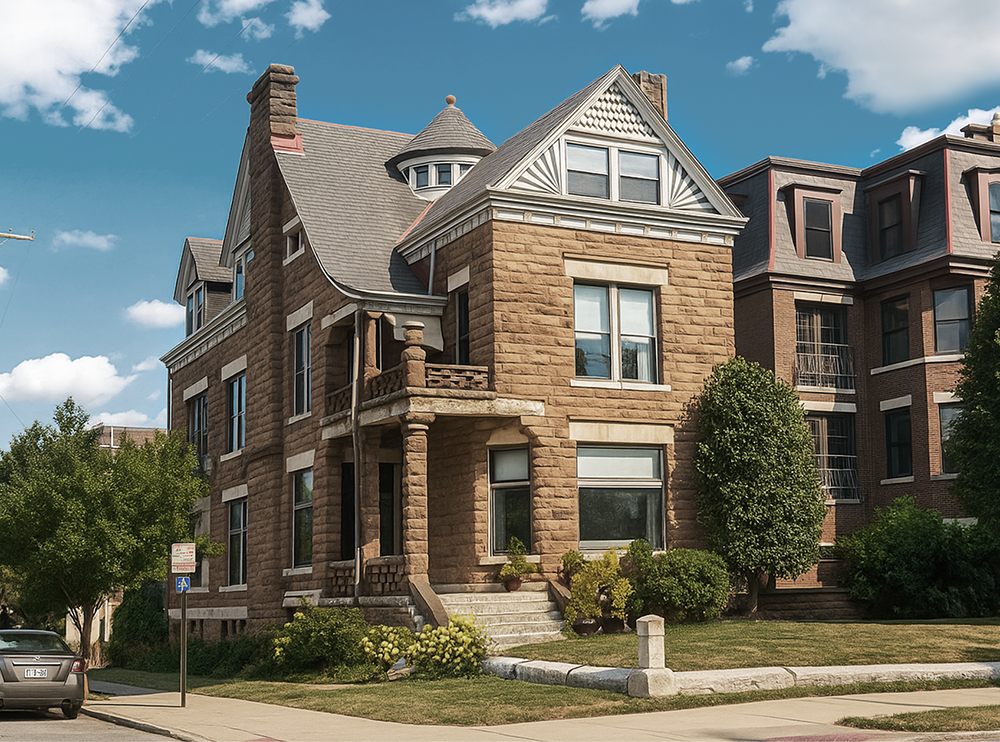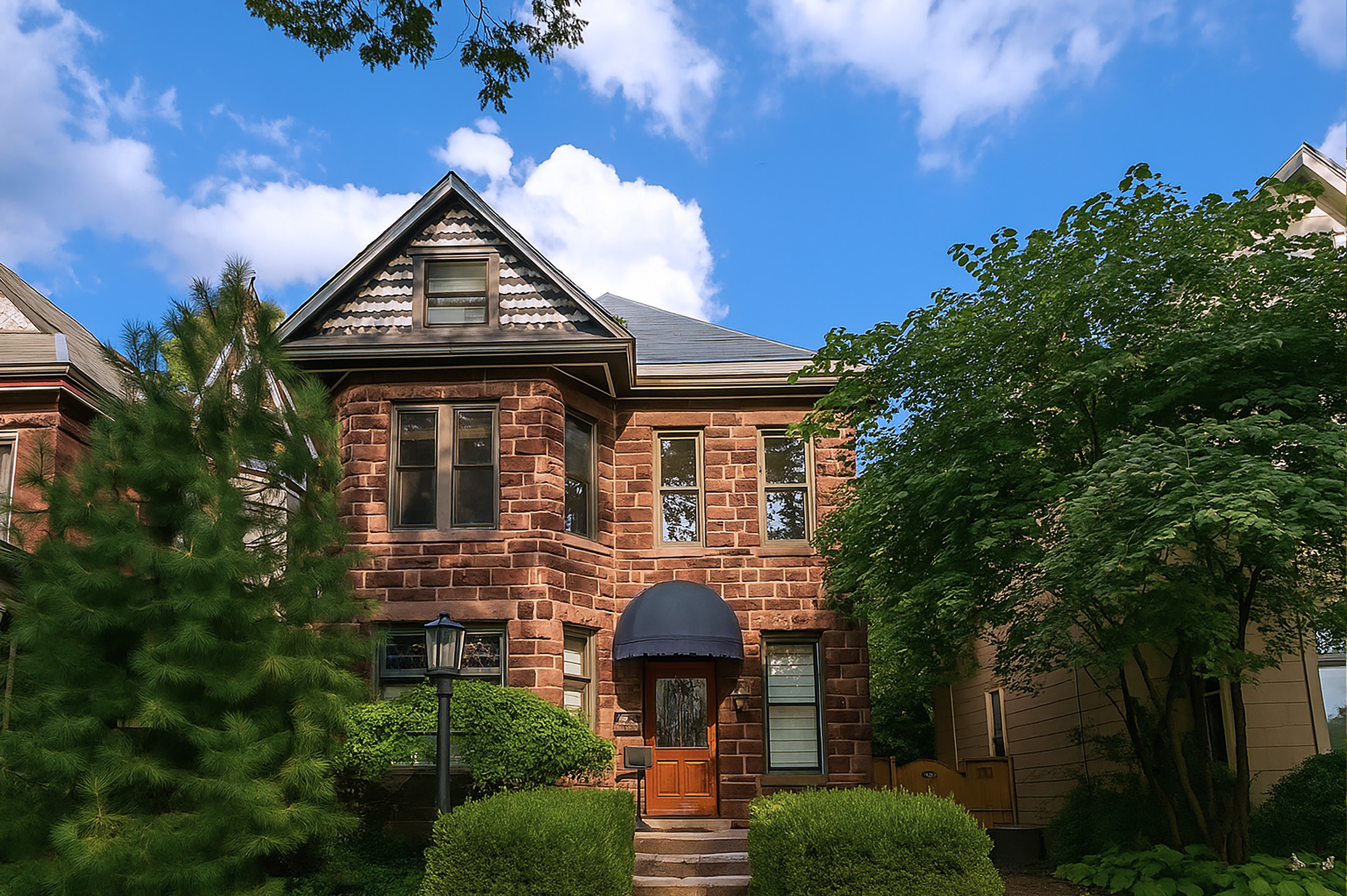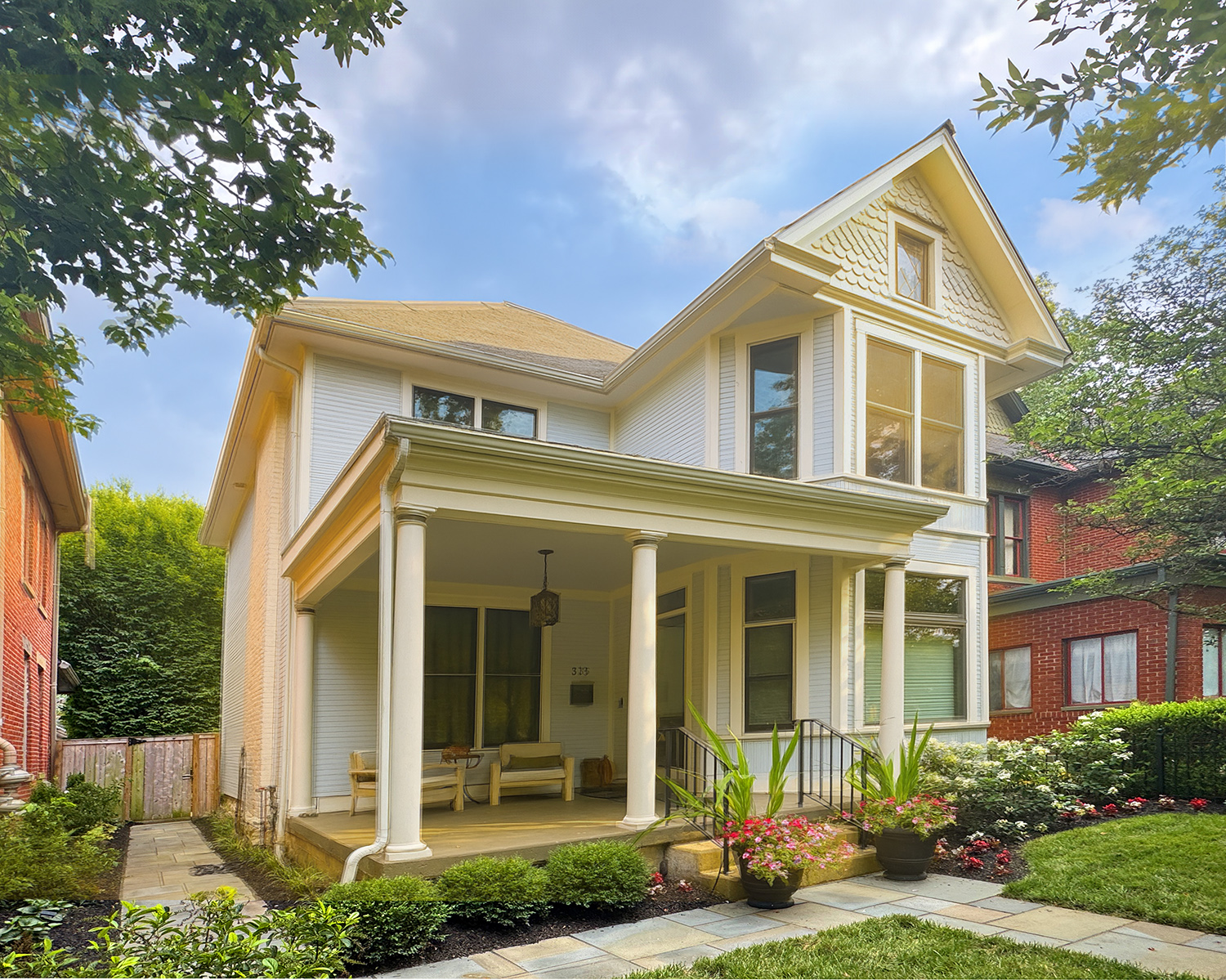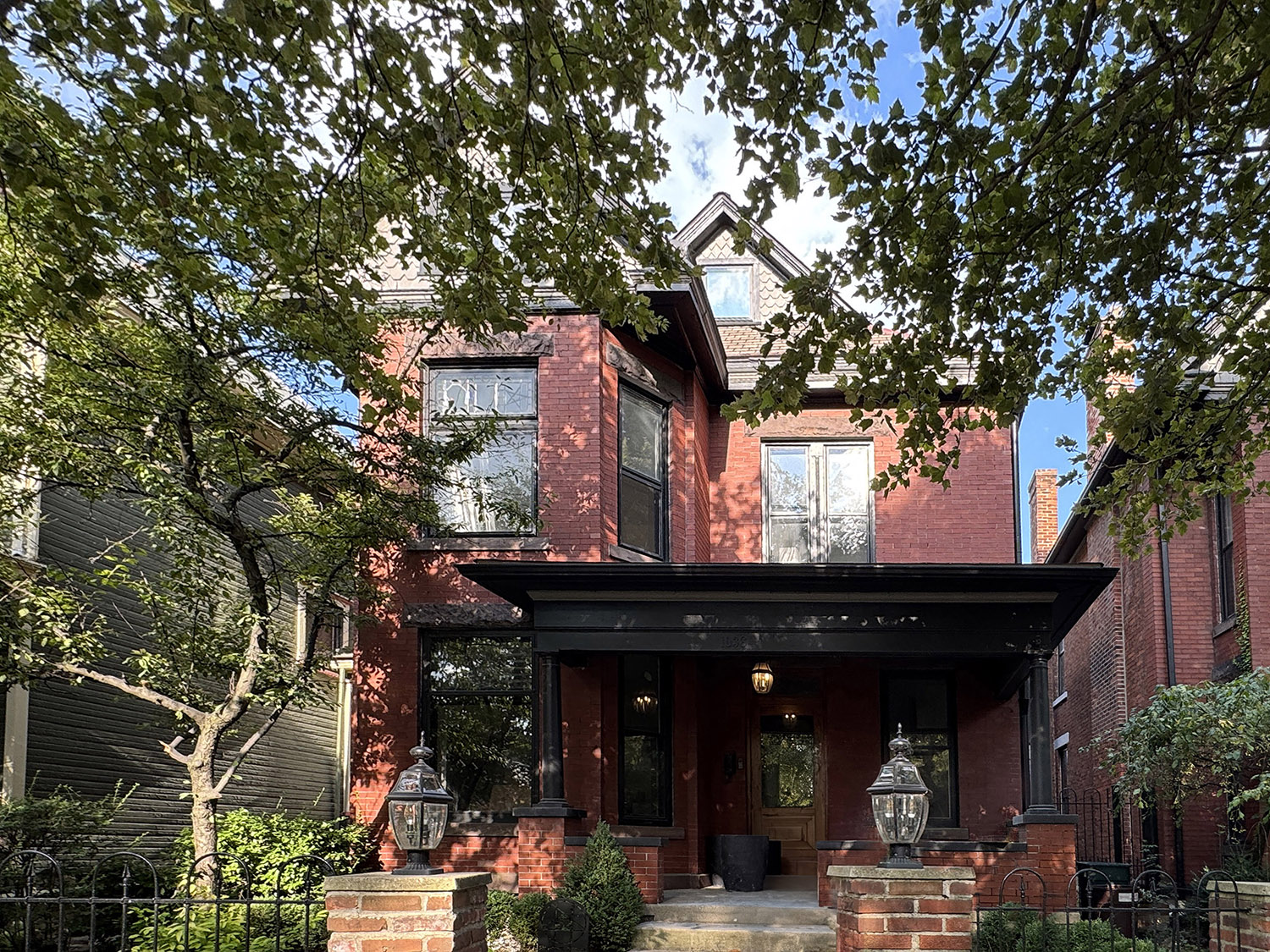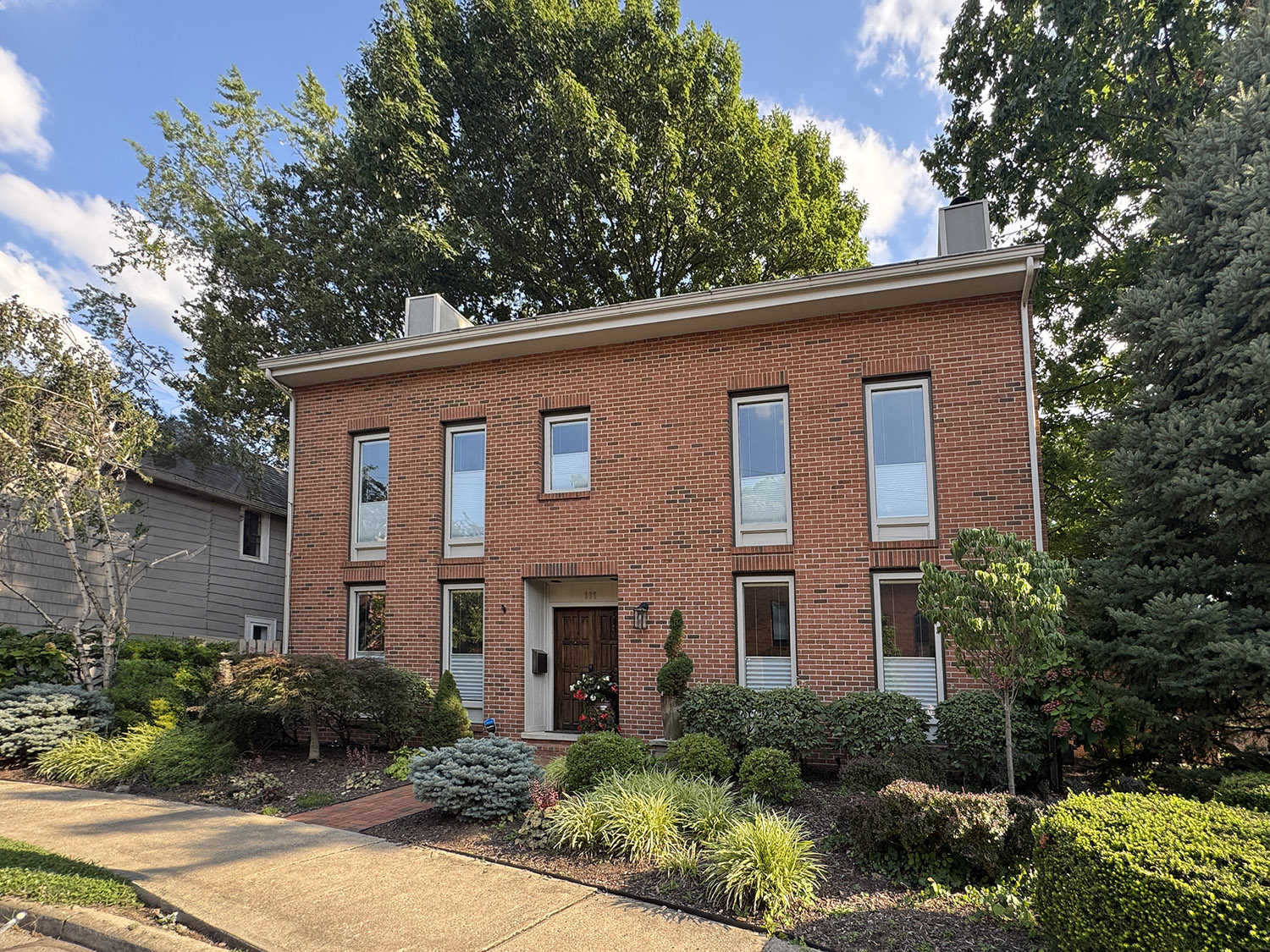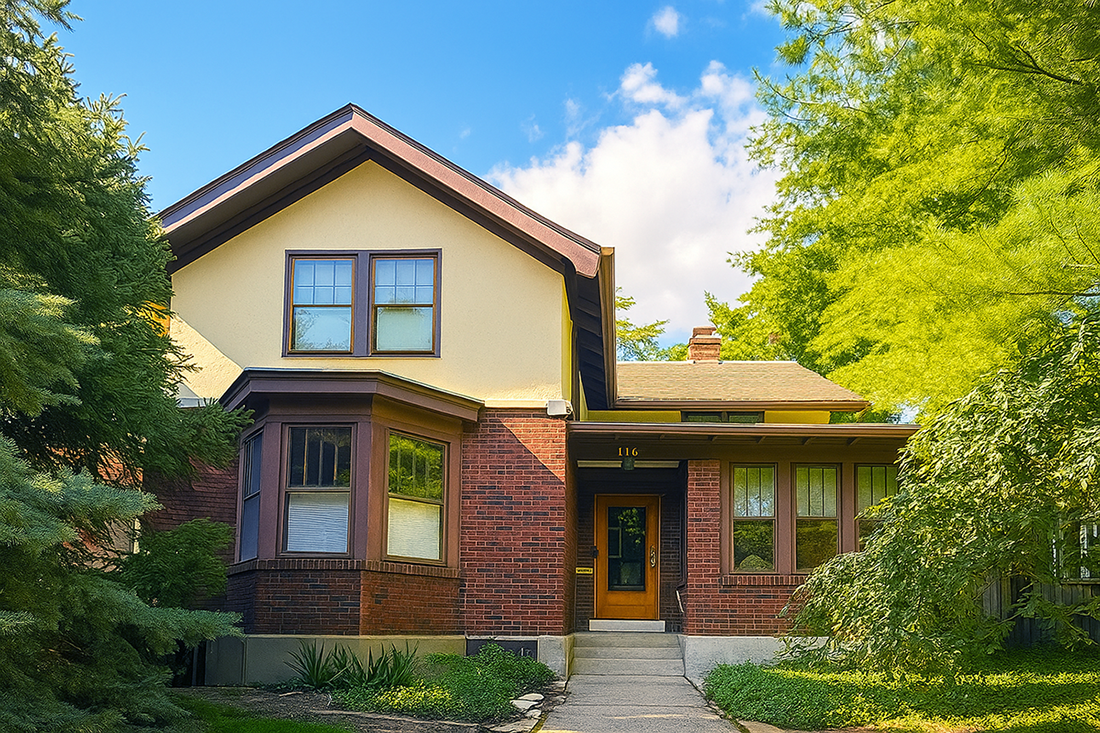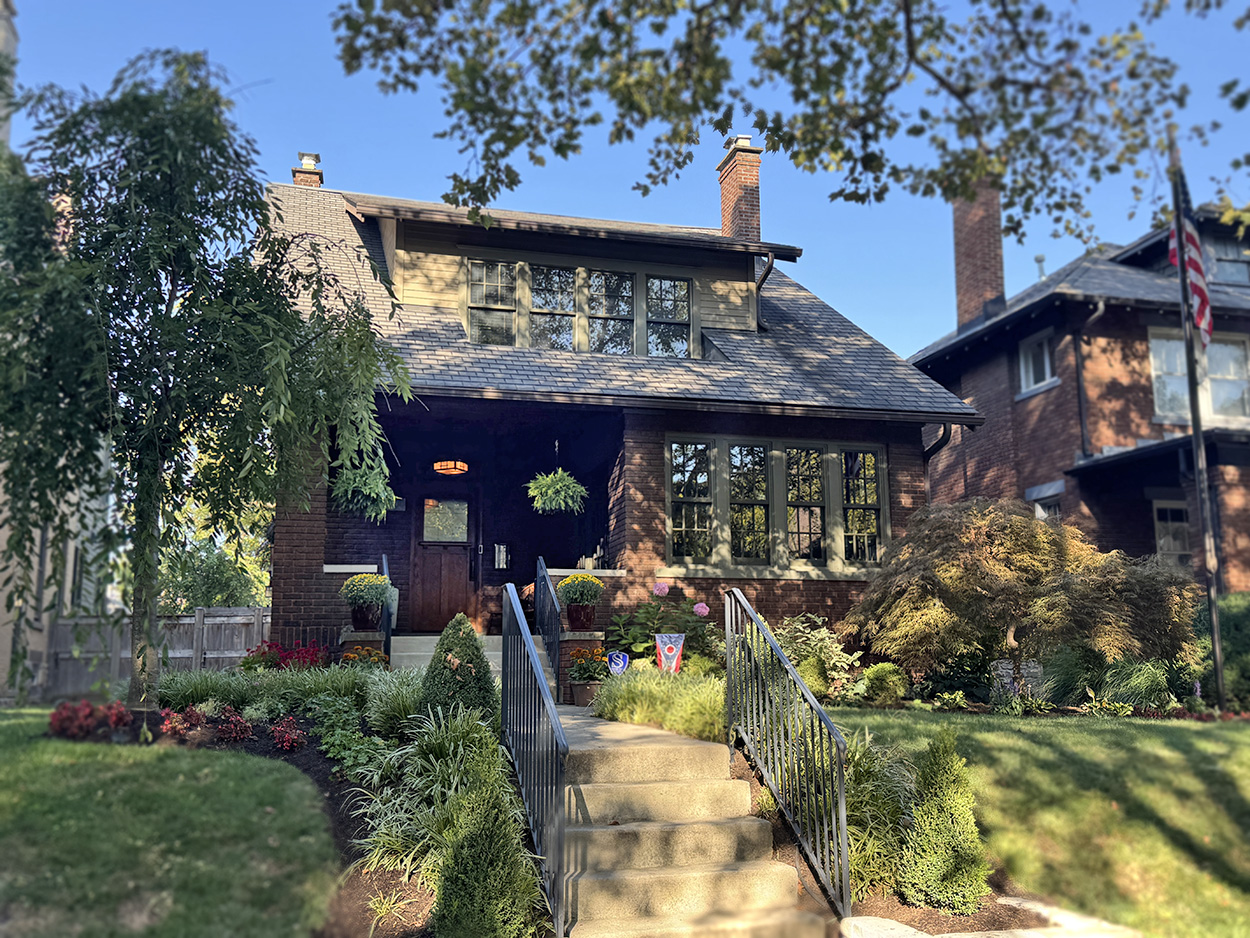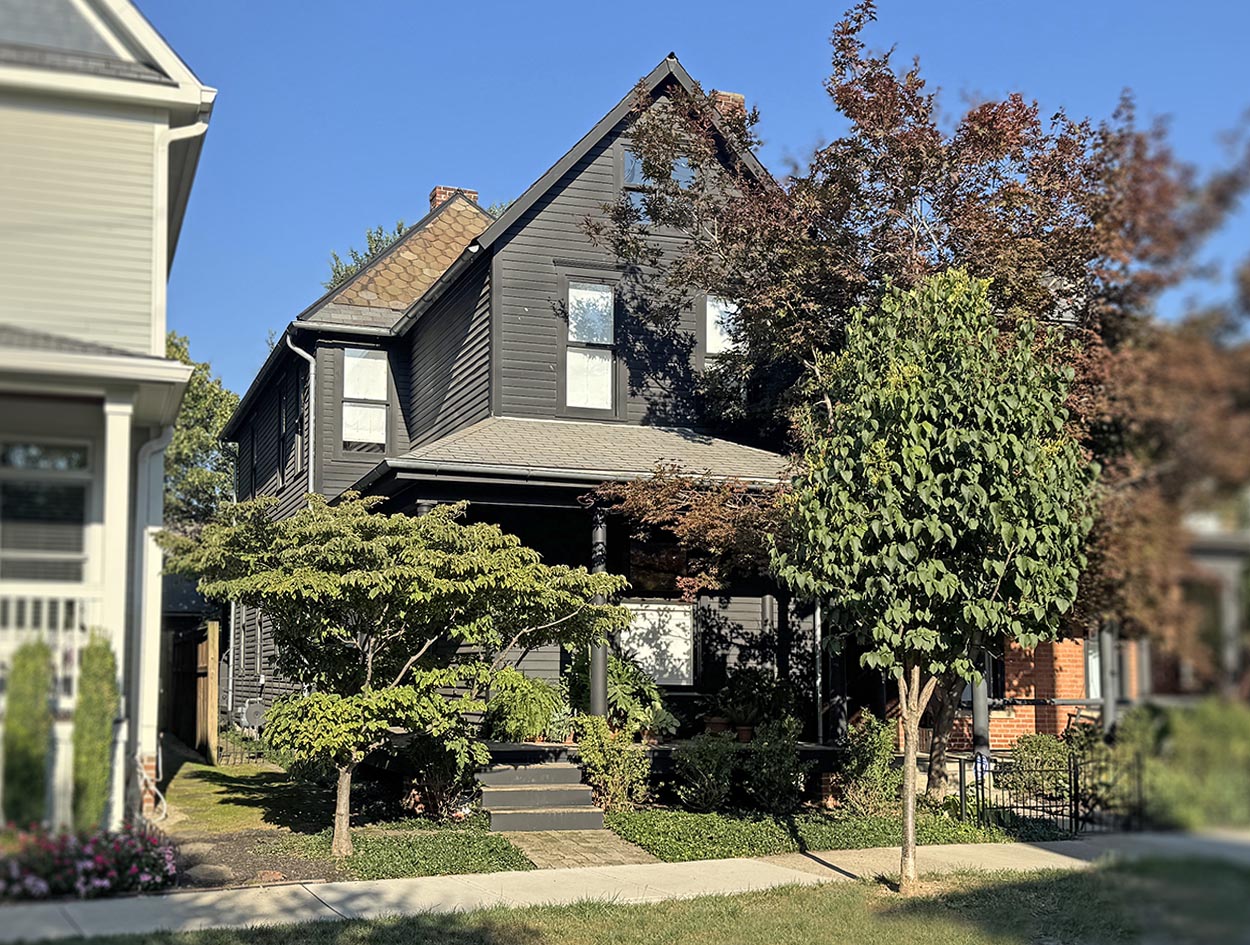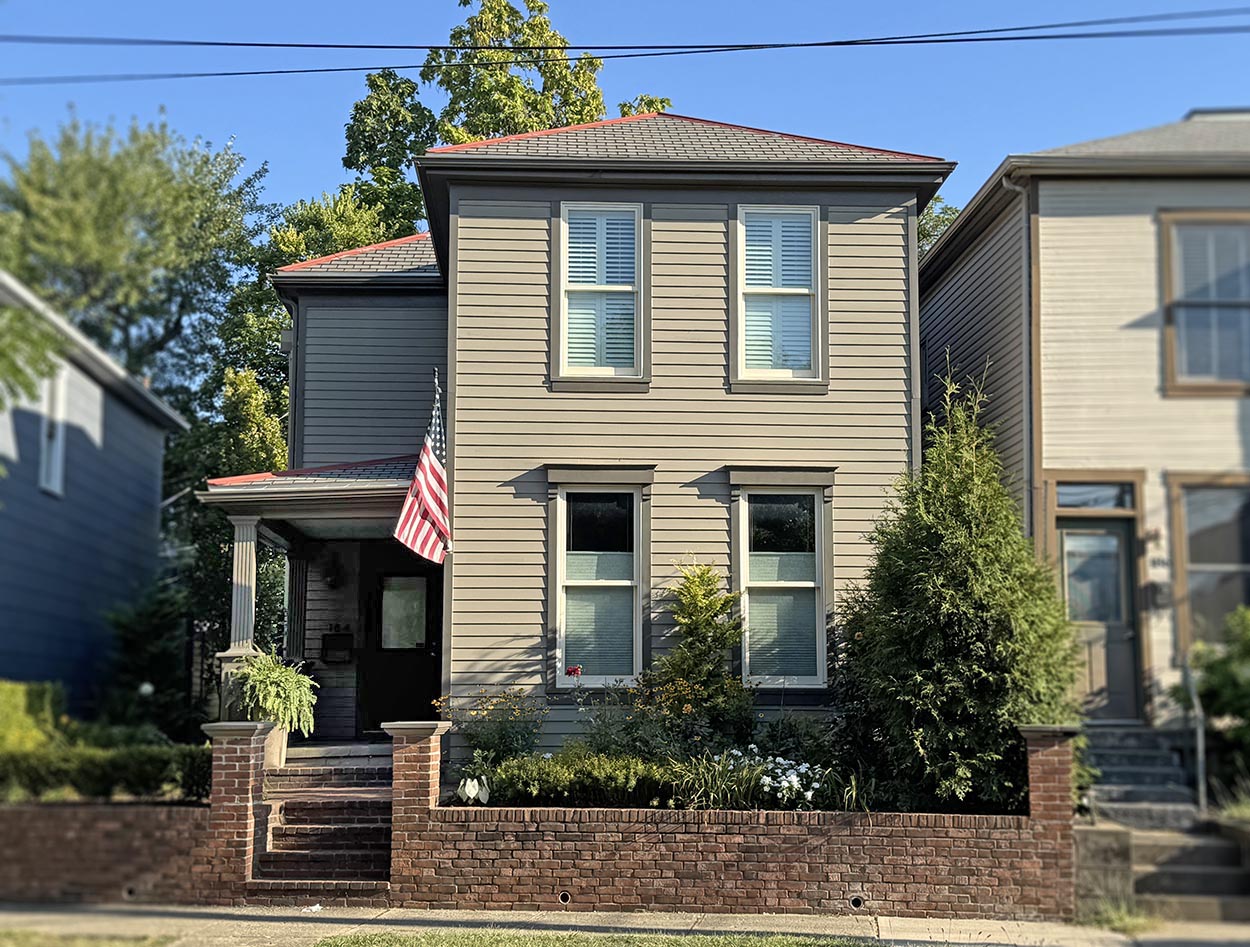Short North
Tour of Homes & Gardens
HOME | PREVIEW & PARTY | TOUR HOMES | GALLERY | VOLUNTEER | FAQ | TICKETS | MAP
HOME TOUR – SUNDAY SEPT 21, 2025
From fabulous Queen Anne mansions to fashionable farmhouse, this year’s tour showcases the unique, eclectic character that IS the Short North! The 2025 Tour of Homes & Gardens invites you on a self-guided exploration through the Short North’s Victorian Village and Italian Village neighborhoods, highlighting exceptional restoration, innovative renovation and use of outdoor spaces.
HOMES ON TOUR
773 Dennison Avenue – aka The Fish House
The Fish Mansion – this magnificent 1890s home, built by W.H. Fish—a stone company owner whose business supplied materials for many local mansions and the park gates across the street—blends Romanesque Revival and Queen Anne influences typical of late 19th–early 20th century urban houses. The rough-faced stone and massive porch columns convey Romanesque strength, while the steep gables, turret-like roof form, and decorative woodwork in the gable add Queen Anne charm. Its asymmetrical façade, tall windows, and mix of textures give the home both solidity and elegance. At 5,000 square feet, the house had been left in partial renovation for 28 years before our client persuaded the previous owner to sell. Over 4 years, a careful restoration balanced historic character with modern comforts, introducing a first-floor powder room, gourmet kitchen, closets, guest bath, master suite, and laundry. The third floor was transformed into a separate guest apartment that also serves as an informal media and entertaining space. More homeowner details to come…
698 Neil Avenue
This handsome stone and brick house is a great example of how the Richardsonian Romanesque style, popular in the late 1800s, was incorporated into local Victorian architecture. The style is named after architect Henry Hobson Richardson, who drew inspiration from the Romanesque period of medieval European architecture, particularly in his use of features like rusticated stonework. Built from locally quarried stone, its solid appearance gives it an enduring feel. Notice how the stone appears only on the front façade while the sides are brick. This was common (and still is) to put the expensive materials and details out front where people would see them. The overall shape of the house may look straightforward but the rich texture of the stone and the contrast with the fish-scale shingles in the gable give it a stately, almost castle-like presence. Homeowner details to come…
335 W. 1st Avenue
This classic Queen Anne-style home blends elegance and simplicity. While some Victorian homes can be overly complicated, this one offers a more refined take on the style which is all in the details. The front-facing gable draws your eye up by coupling two different types of wood shingles – diamond and fish scale. The narrow horizontal siding on the house is beautifully contrasted with the vertical trim under the windows in the two-story bay – a texture difference that enhances the façade. The inviting front porch with its classical columns was designed for both aesthetics and everyday use. It’s a lovely example of how historic homes can feel both grand and approachable, built with care and meant to last for generations. Homeowner details to come…
1038 Neil Avenue
This Queen Anne-style home was built in the late 19th century and shows the rich detail and asymmetry that defined Victorian-era architecture. It has a prominent front-facing gable with patterned shingles (notice that those shingles are repeated on the box bay on the side of the house). The front bay angled walls have a subtle inset brick detail that adds depth and the rusticated stone lintels and sills provide a nice contract to the red brick. Original windows, including stained-glass transoms, reflect the craftsmanship of the era. While the home’s tall, narrow proportions and steeply pitched roof create a vertical emphasis, the deep eaves and generous front porch offer a welcoming, grounded entrance. Beautifully maintained, this home is an excellent example of early residential design in the neighborhood. Homeowner details to come…
111 Price Avenue
Here’s a great example of a contemporary home that blends thoughtfully into a historic neighborhood. Rather than imitating its Victorian neighbors, this house uses similar architectural cues to fit in seamlessly. The roof and eave height line up with the surrounding two-story homes, and the red brick exterior echoes the materials seen throughout the block. The entrance, tucked beneath a deep overhang, feels welcoming and grounded. And while the windows are clearly modern—not the classic double-hung style—you’ll notice they’re similar in size and spacing to those on nearby homes. This house shows that new construction in a historic district doesn’t have to be a copy of the past. When designed with care and attention to context, contemporary architecture can complement the old and help maintain the rhythm and character of the street. Homeowner details to come…
110 W. 1st Avenue
This home reflects a time when builders were moving away from ornate Victorian styles and embracing simpler, more livable architecture. This early 20th-century Craftsman home was a popular style of the era. The house has a grounded feel to it which makes it less imposing and more integrated into the landscape around it. The brickwork on the first floor gives the house a solid, warm feel, while the upper half—finished in light-colored stucco – adds a nice contrast and emphasizes the horizontal lines of the style. The gabled rooflines and exposed rafters under the eaves are signature elements of the Craftsman movement, which celebrated hand-crafted detail and natural materials. Though modest in scale, the design emphasizes proportion, texture and thoughtful craftsmanship that still feels timeless today. This property includes a beautiful garden that flows from the back of the home through to the next street. Homeowner details coming soon…
853 Park Street
This home is a beautiful example of early 20th-century American Craftsman architecture, with clear influences from the Prairie and Arts & Crafts movements. Its steeply pitched, side-gabled roof with broad overhanging eaves and a small shed dormer reflect classic Craftsman massing, while the deep brick porch and grouped casement windows emphasize horizontal lines reminiscent of Prairie design. The use of red brick as the primary exterior material conveys durability and permanence, while the multi-pane windows and modest detailing align with the Arts & Crafts philosophy of simple, honest craftsmanship. Together, these elements create a house that feels both solid and inviting, embodying the balance of function, beauty, and natural materials that defined the Craftsman era. Homeowner details coming soon…
801 Hamlet Street
This charming home is a wonderful example of vernacular Queen Anne architecture built in the late 1800s. While it may not have the elaborate ornamentation you might see in more high-style Victorians, it still carries the key traits of the era—tall, narrow windows which draw the eye upward, a steeply pitched front-facing gable and a cozy wraparound porch. Homes in this part of the neighborhood were built mainly for workers in the nearby railroad-related industries like Jeffrey Mining and Berry Brother Boltworks. They tend to be more modest in size but still had handcrafted details, like the stained glass you see in the front window. Today, it’s a lovely reminder that even the more understated homes of the period were built with care, character, and a strong sense of place. Homeowner details coming soon…
184 E. First Ave
Creative homeowners have long flocked to Italian Village because the houses can offer unlimited potential for renovation and reimagination. Here is a home that started as a classic vernacular Queen Anne – an L-shaped plan with a side porch, that then grew to become its own compound. The main house had been extensively renovated years ago to create an open first floor plan, and then a recent two-story extension added a butler’s pantry and primary bath suite. Featuring 68 pieces of original art, this home blends living and art in perfect harmony. An old garage was removed and a new 2-car carriage house was constructed, complete with an artist studio in the lofted space above. The main house and studio now open out to a secluded, private garden, while the front of the house maintains the historic look of the surrounding neighborhood. Homeowner details coming soon…
Bonus Stop:
Columbus Museum of Art at The Pizzuti, 632 Park Street
This building is an example of Beaux-Arts and Neoclassical Revival architecture, a style popular in civic and institutional structures of the early 20th century. Its symmetrical façade, balanced proportions, and use of classical ornamentation are all part of this style. The limestone cladding gives it a monumental presence, while the carefully coursed stonework emphasizes both strength and refinement. The central entrance is highlighted by a round-arched doorway framed with radiating stonework, lending a sense of dignity and formality. Flanking lanterns reinforce the ceremonial quality of the entry. Above, a decorative frieze spans the façade, inscribed with the original organization’s name, (Order of United Commercial Travelers of America) underscoring the building’s institutional purpose. Classical details such as the balustraded panels beneath the upper windows, carved shields and medallions, and Corinthian-inspired pilasters add richness and convey permanence. A projecting cornice with dentils and brackets caps the composition, providing a strong horizontal line typical of Beaux-Arts design.



